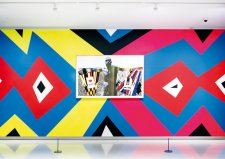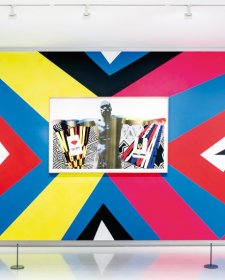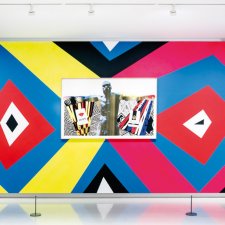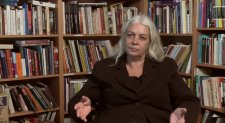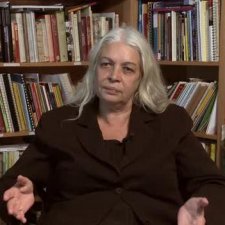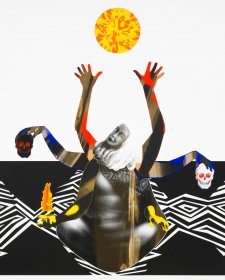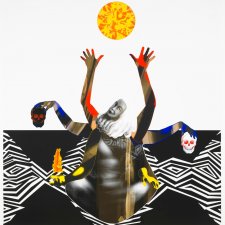So I had Marcia in the studio here and she’s a Buddhist, so I really wanted to capture that gentle side of her as well as the very legal action side of her as well and the social side of her in the public eye. She’s incredibly quick and smart, obviously, and, yeah, just a really fantastic person to work with, and just her ideas and the kind of work which she actually engages in. So, that complexity in the public space, in [the] public arena. I really wanted to capture something of her gentleness as well. So she sat in a meditation pose and so I took photos of that. And then I had this idea of her having many arms. And so I asked her to put her hands up, you know, in different poses.
And then I started to think about not only about her being a Buddhist, but the kind of elements in her life, which I’d like to represent. And so, the diamond was a very obvious symbol because of the important work she’s done with the Argyle diamond mining. Also, fire was really important because she’s written a book on fire and Aboriginal fire practices. And also, the skulls. And I think that, you know, the skulls are very important because some people think, ‘Oh, anthropology is just only about the bones and aboutIindigenous people’, et cetera, but there are quite a few Indigenous anthropologists and it’s very important, so I wanted to show that. But it was also about balance, so there was a black skull and a white skull.
The other symbolism in Marcia’s portrait is the Wiradjuri pattern, but it’s a lot more like a river. And so I really wanted that to flow like energy. It’s about magic. And it’s about being a magic person and fire. And the six hands are there not necessarily to be Kali-esque. Kali is, of course, the god of destruction and creation. It’s not really about that for me, it’s more the fact that she does many things. Some people have said that it looks like a spider almost, as well. And I think that’s find of fantastic because spiders are very busy little creatures.
